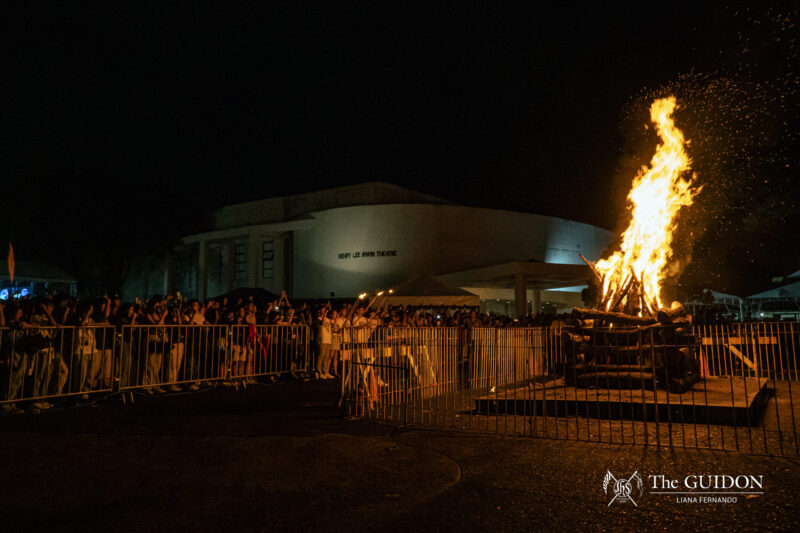THE HISTORY of the Philippines’ political landscape is marked, among other things, by recurring patterns of women rising to power in times of political unrest. The turbulence of President Rodrigo Duterte’s administration has set the stage for the ascension of several women leaders, each representing different facets of Philippine politics. While he has made several misogynistic statements, most notably surrounding the detention of opposition Senator Leila de Lima, it seems that the President will allow women to hold power as long as they support his administration.
Former President Gloria Macapagal Arroyo, for instance, began her political career as a promising, well-educated young woman. After earning her Master’s degree in Commerce and her Doctorate in Economics, she was appointed as an Assistant Secretary in the Department of Trade and Industry (DTI) by former President Corazon Aquino. After serving two terms in the Senate, Arroyo was elected Vice President in 1998. Following the EDSA People Power II protest against former President Joseph Estrada, Arroyo ascended to the presidency.
Despite her impressive qualifications, Arroyo’s term as president was riddled with controversy and impeachment complaints. The “Hello Garci” scandal emerged in 2005, implicating Arroyo and former Commission on Elections (COMELEC) Commissioner Virgilio Garcillano in election fraud. Following this, Arroyo was charged with plunder for her alleged misuse of P366 million worth of Philippine Charity and Sweepstakes Office (PCSO) funds. After being acquitted by the Supreme Court in 2016, Arroyo rose to power again as Congress Representative of Pampanga. Currently, she is the Speaker of the House of Representatives, succeeding Pantaleon Alvarez who was ousted during the 2018 State of the Nation Address (SONA).
Another controversial appointment was that of Teresita de Castro. In the 153-page ruling released in May, Associate Justice Noel Tijam along with other justices wrote in approval of the quo warranto petition against former Chief Justice Maria Lourdes Sereno, ousting her from her position for “lack of integrity” and failure to fully disclose her wealth. In her place, Duterte appointed de Castro as the new Supreme Court (SC) Chief Justice despite her retirement on October 10, rendering her term as chief justice only 44 days. This caused many to question her motives, considering her role as one of those who voted in favor of the impeachment, although these accusations were denied by the President. The Commission on Human Rights (CHR) denounced this decision, stating that the petition grant “erodes our obedience to the rule of law and departs from the will of the Filipino people.”
As House Speaker, Arroyo has aligned herself with Duterte, declaring, “I will endeavor to carry out the legislative agenda of President Rodrigo Duterte in the Lower House.” Similarly, de Castro’s votes in the Supreme Court have been in line with the President’s own agendas. De Castro has voted in favor of the Marcos burial, Senator Leila de Lima’s arrest, the declaration and extension of martial law in Mindanao, and the ousting of former Chief Justice Sereno. Prior to the Duterte administration, de Castro voted to acquit Arroyo of her plunder charges. Both women have made it clear that their roads to power will not be paved with dissent.
Symbols of dissent
Historically, the Philippines has not shied away from electing female leaders. Former President Corazon C. Aquino, the first female president in Asia, is one of the most iconic women leaders both in the Philippines and on the global stage. She rose to power in 1986 as the figurehead of the opposition against late dictator Ferdinand Marcos Sr., following her husband and former Senator Benigno “Ninoy” Aquino Jr.’s assassination.
The Marcos dictatorship, characterized by human rights violations and media censorship, is referred to by some Filipinos as the death of Philippine democracy. After Martial Law, Aquino was said to have ushered in the rebirth of Philippine democracy. However, her lack of experience in politics led to a difficult transition of power, and a grueling maintenance of the presidency itself. During her administration, this very naiveté in the arenas of politics and governance was the constant subject of public criticism.
Amidst the failing economy, fractured bureaucracy, several coup attempts, and the controversial Mendiola Massacre, Aquino remained a steadfast symbol of the opposition. She is remembered by the Filipino people as a humble figure; the antithesis of the corrupt administration that preceded her. Her prominence in the political landscape of her time was marked by the distinct yellow ribbon that most Filipinos, if not all, would recognize to this day, as a symbol of the Aquino legacy.
Aquino’s mark in history is mirrored by now Vice President Leonor “Leni” Robredo, a self-proclaimed leader of the opposition in Duterte’s administration. Both women have voiced out their distaste for the injustices perpetrated by the administrations of their time and actively oppose their corresponding leaders. Like Aquino, Robredo’s context is characterized by a relative lack of political qualifications; she carried with her the influence of her late husband Jesse Robredo, who served as the Secretary of the Interior and Local Government under former President Benigno “Noynoy” Aquino III’s administration. Prior to her husband’s death, Robredo handled cases concerning the marginalized sector as a practicing lawyer and eventually became the Representative of Camarines Sur.
Similarities within the histories of these two women have led to comparisons between them. At a Liberal Party meeting in 2015, Aquino III endorsed Robredo’s vice presidential campaign, claiming that she will serve as the next symbol for liberal ideals, just as his mother did. Robredo’s criticism of Duterte’s disregard for human rights and misogynistic comments has driven people to call upon her to lead the opposition, which she accepted, possibly setting herself up to secure their support for the 2022 presidential elections.
However, as evidenced in Aquino’s presidency, being the symbolic leader of a cause is not enough to guarantee effective leadership of a government. Aside from continuing to make statements on the current state of the government, Robredo looks forward to adding “professionals and advocates” into the Liberal Party (LP) in order to revitalize its membership.
At the LP’s 72nd anniversary party, Senator Francis Pangilinan defended Robredo’s late acceptance of leadership, reminding everyone that no single person should be depended upon to fix an entire system.“The opposition, as is the administration, is not a monolithic entity […] to expect that one individual will be the Messiah that will deliver us from Evil is not what democracy or even freedom is about,” he states.
Past lessons, future hopes
While these women come from varying backgrounds, political affiliations, and branches of government, what ties them together is the position in which they find themselves. At the forefront of Philippine politics, each of these women carries with her an important role in shaping the future of the country.
In the past, Aquino was able to reignite the democratic spirit of the Philippines. She instigated non-violent protests, stood up for those trampled upon by the oppressive regime. In spite of her contributions, Aquino’s inexperience prevented her from fully reversing the ills of the regime which preceded her.
Looking forward, the women at the center of contemporary Philippine politics have considerably more experience in government work. Although Arroyo’s presidency was filled with controversy, her return to the legislature may signal that her economic expertise will be used to manage the prevalent downward trends in the Philippine market, such as inflation. Meanwhile, as de Castro fulfills what is left of her term as the current Chief Justice, the country has yet to see the kind of role she will play in building the legacy she will soon leave behind in the Supreme Court.
Lastly, although Robredo is relatively new to national governance, having only spent a single term in Congress before her vice presidency, her several years of experience representing marginalized sectors at the lower courts became her springboard to upholding the rule of law at the national level.
With their recent ascension to the top of their respective government branches, the Philippines can anticipate the transition of the roles that each woman will continue to play on the Philippines’ political stage in the coming months.
What do you think about this story? Send your comments and suggestions here: tgdn.co/2ZqqodZ




